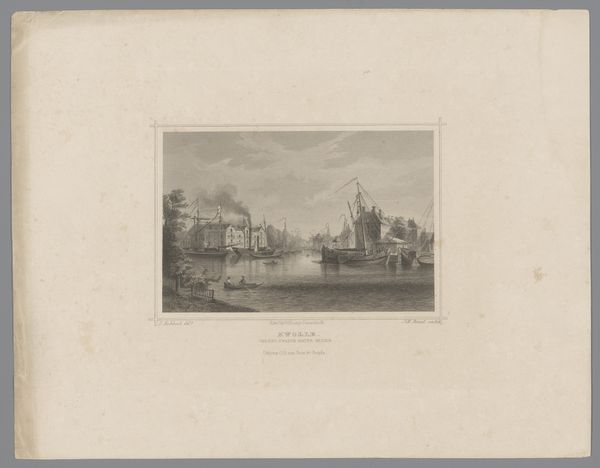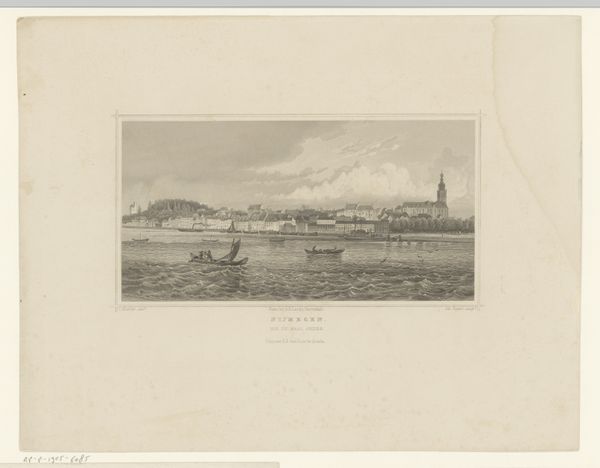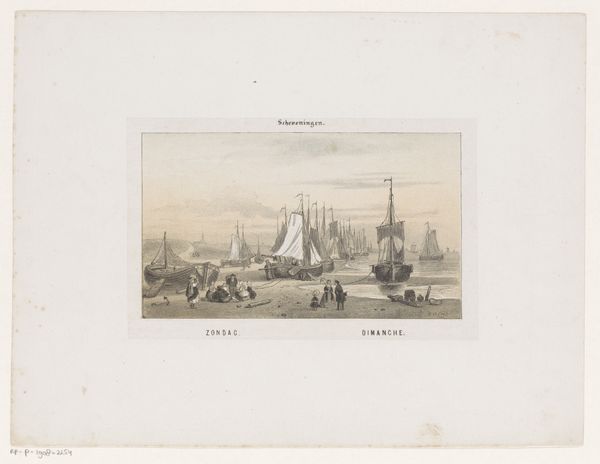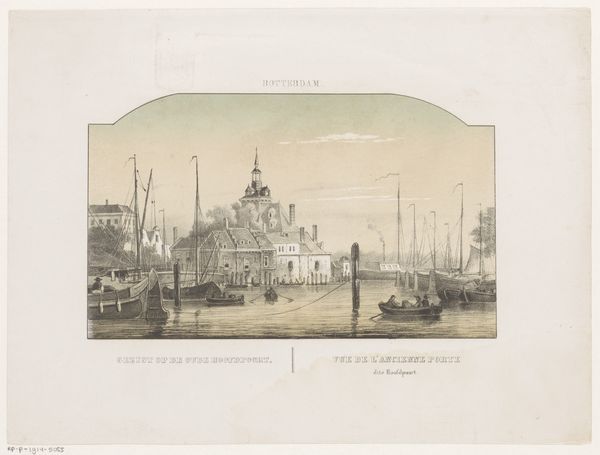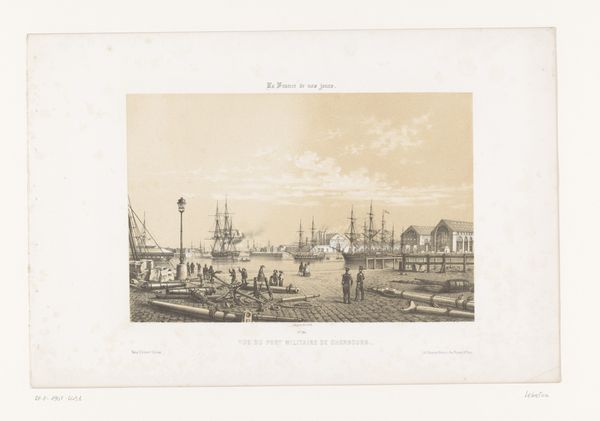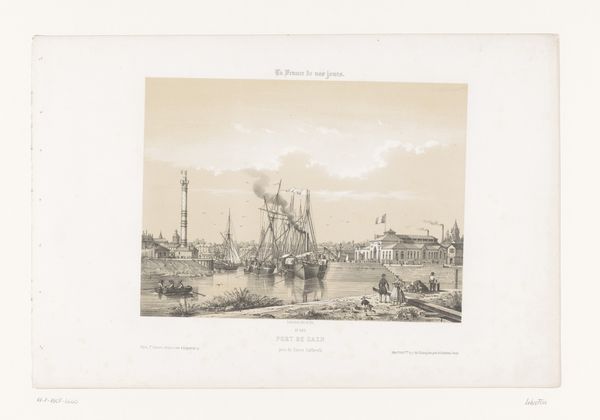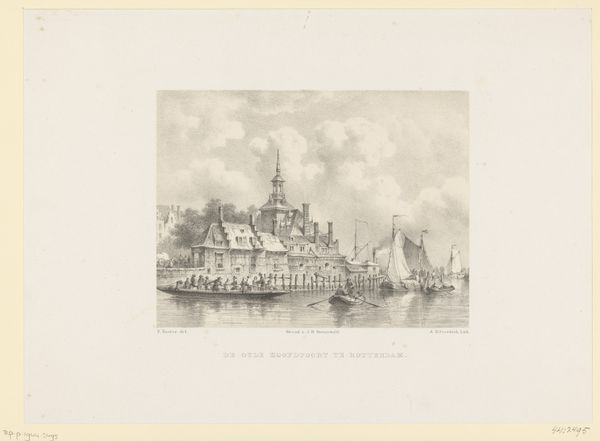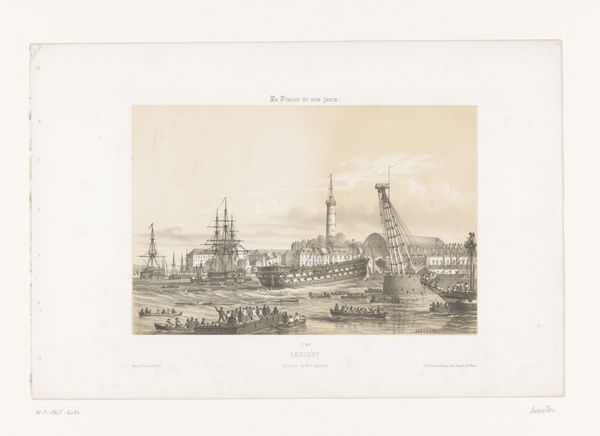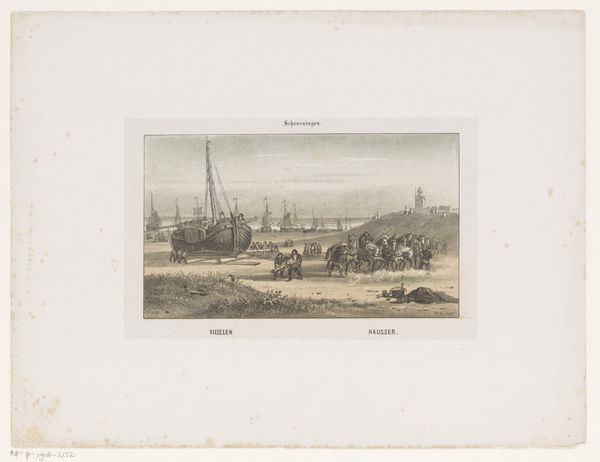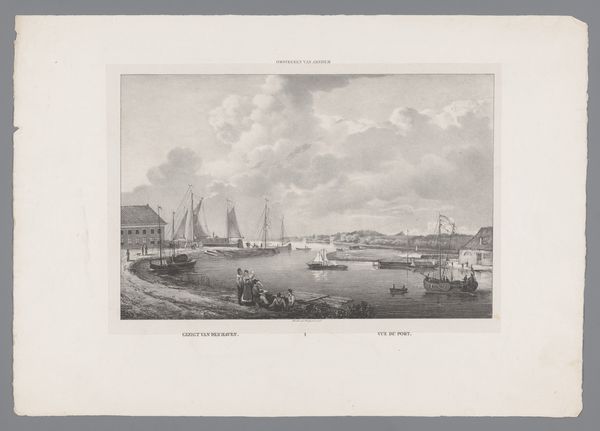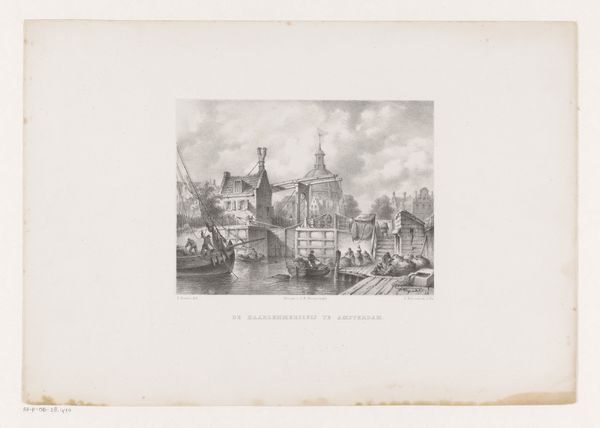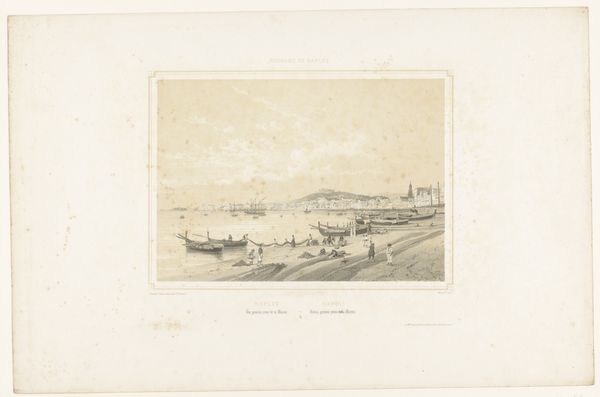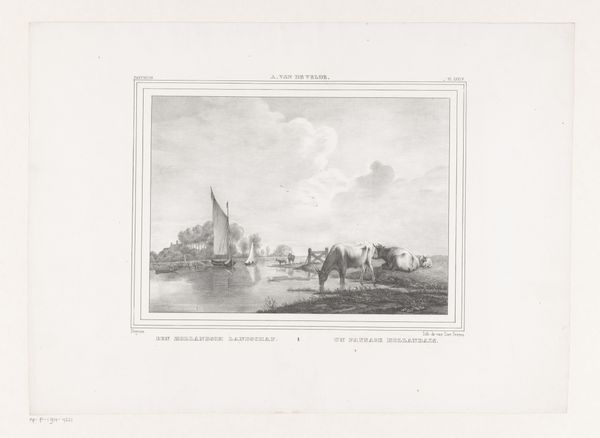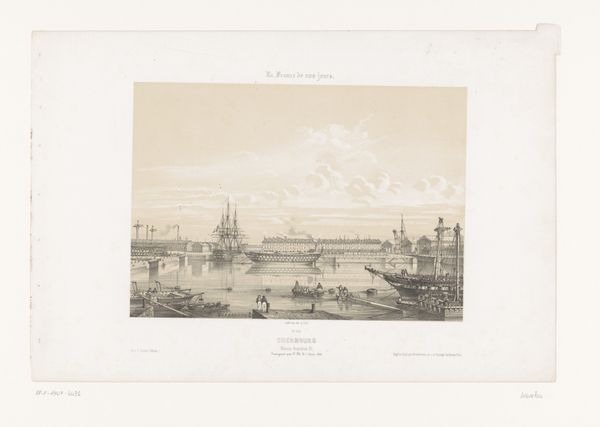
drawing, print, etching, paper
#
drawing
# print
#
etching
#
landscape
#
paper
#
cityscape
#
academic-art
#
realism
Dimensions: height 246 mm, width 320 mm
Copyright: Rijks Museum: Open Domain
Curator: This is Charles Rochussen's "Gezicht op de Boompjes te Rotterdam," or "View on the Boompjes in Rotterdam," dating from around 1839 to 1844. It's a drawing reproduced as an etching and print. Editor: It's quite peaceful, almost nostalgic. The muted tones evoke a sense of the past, a Rotterdam that feels distant yet familiar. The sailing ships exude power and the unknown. Curator: Indeed. The Boompjes was, and still is, a well-known waterfront area. Rochussen's image captures Rotterdam as a bustling port city in the early 19th century. We can see the importance of maritime trade reflected in the detailed depiction of the ships and dockworkers, shaping Rotterdam's identity through exchange with far flung locales. Editor: The symbolism of ships, always facing outward toward the horizon, and with them a reach towards a larger, interconnected world. They are icons of possibility. I see a distinct contrast between the stillness of the buildings and the implied motion of the ships. This interplay captures the enduring energy and aspirations of the city. Curator: Precisely, Rotterdam was a city in flux, expanding its global reach. Rochussen wasn't just depicting a scene; he was documenting a period of significant social and economic transformation. Prints like these circulated widely, shaping perceptions of Rotterdam as a vital hub. Editor: Also look at the people scattered around! The clothing style makes a time capsule available for us to engage in. Are they importing or exporting something besides tradeable goods? Ideas? Styles? They create a micro-cosmology on the port that gives a glimpse of a day in that moment in history. Curator: And one can also read how Rotterdam invested significantly in infrastructure to support its shipping industry at the time, the long, wooden pier which facilitated the loading and unloading of goods, crucial for efficient trade, and we also note this image was meant to circulate, contributing to a broader sense of national and civic pride. Editor: It’s interesting how seemingly objective depictions are actually filled with symbolic meanings when examined more closely. Curator: That is where art lives: history as more than simple objective, neutral and immutable fact, but as memory imbued with meaning. Editor: Well said. It's remarkable how an image can hold so much, offering a lens into a bygone era.
Comments
No comments
Be the first to comment and join the conversation on the ultimate creative platform.
